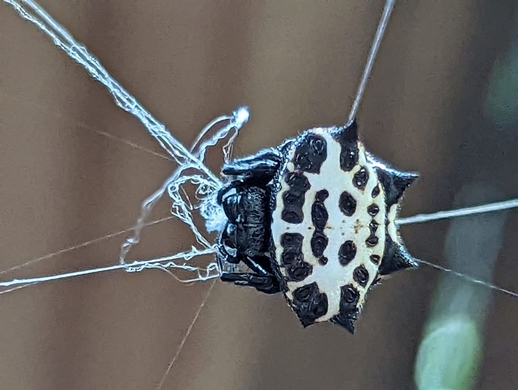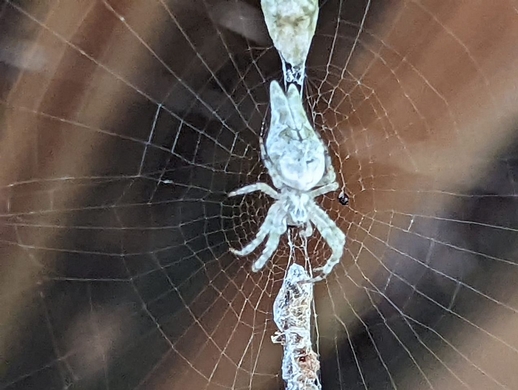by M. Kathy Raines

I heartily recommend this new book, An Immense World, by Ed Yong (published in 2022, 464 pages), which explores the umwelten, or sensory worlds, of various species—including everything from scallops, orb weaving spiders and octopuses, to bats, manatees and lions. It is a humbling read, but he never denigrates our own remarkable senses, particularly our vision. Yong encourages our admiration for all species, a respect I felt keenly as I wandered through the Gladys Porter Zoo this afternoon, marveling as much at fish, amphibians and reptiles as birds and mammals.
For me, a worthy book is one I find myself pondering for days, maybe weeks or years, one that makes me a better person for having read it. That’s the case with An Immense World. I exit my door into the realm of my backyard and marvel at the bejeweled spiny-backed orb weaver preparing to eat a captive fly. I more keenly observe ants. At night, I even find myself admiring the glossy carapaces—with yellowish strips along the front—of American cockroaches scaling our olive tree, vacuuming up leftover fruit or peanut butter set out for birds. What a wonderful world!

I expected to learn about creatures’ expertise in the classic five senses: vision, hearing, taste, smell and touch. I was surprised and humbled, though, to read in detail about vibrations, electric fields, magnetic fields and echolocation—which I was intrigued to learn is also performed by some visually-impaired humans.
Yong describes how and why light and noise pollution is so detrimental not only to our fellow creatures, but ourselves, proposing solutions, many of which—like curbing city lights during bird migration—are neither expensive nor difficult to achieve. He writes:
“Instead of stepping into the Umwelten of other animals, we have forced them to live in ours by barraging them with stimuli of our own making. We have filled the night with light, the silence with noise, and the soil and water with unfamiliar molecules. We have distracted animals from what they actually need to sense, drowned out the cues they depend upon, and lured them, like moths to a flame, into sensory traps.”
He tells of insects “fatally attracted to streetlights, mistaking them for celestial lights and hovering below them until they succumb to exhaustion.”

Yong shows equal awe for the obvious grandeur of, say, Yellowstone or the Grand Canyon, as for expanses of grasslands. He notes: “Eighteenth-century thinkers believed that vast and magnificent landscapes reminded people of their own mortality and brought them closer to glimpsing the divine.” However, he says, “Equating wilderness with other-worldly magnificence treats it as something remote, accessible only to those with the privilege to travel and explore.” He thinks doing so “imagines that nature is something separate from humanity rather than something we exist within.”
The inspiration to read An Immense World sprang from listening to this fascinating recent interview with Yong on NPR’s Fresh Air: https://www.npr.org/sections/health-shots/2022/06/22/1105849864/immense-world-ed-yong-animal-perception-echolocation

Leave a Reply